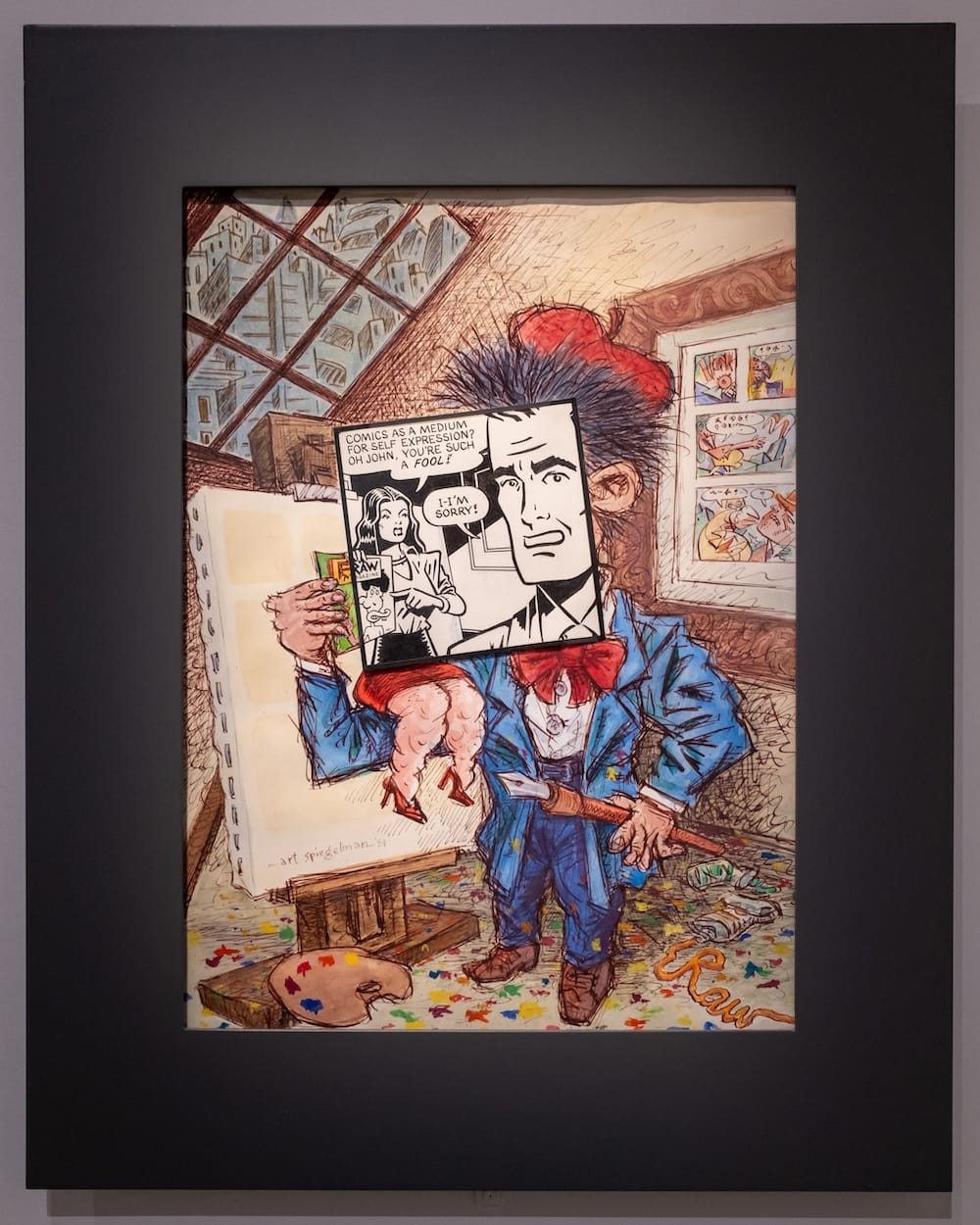
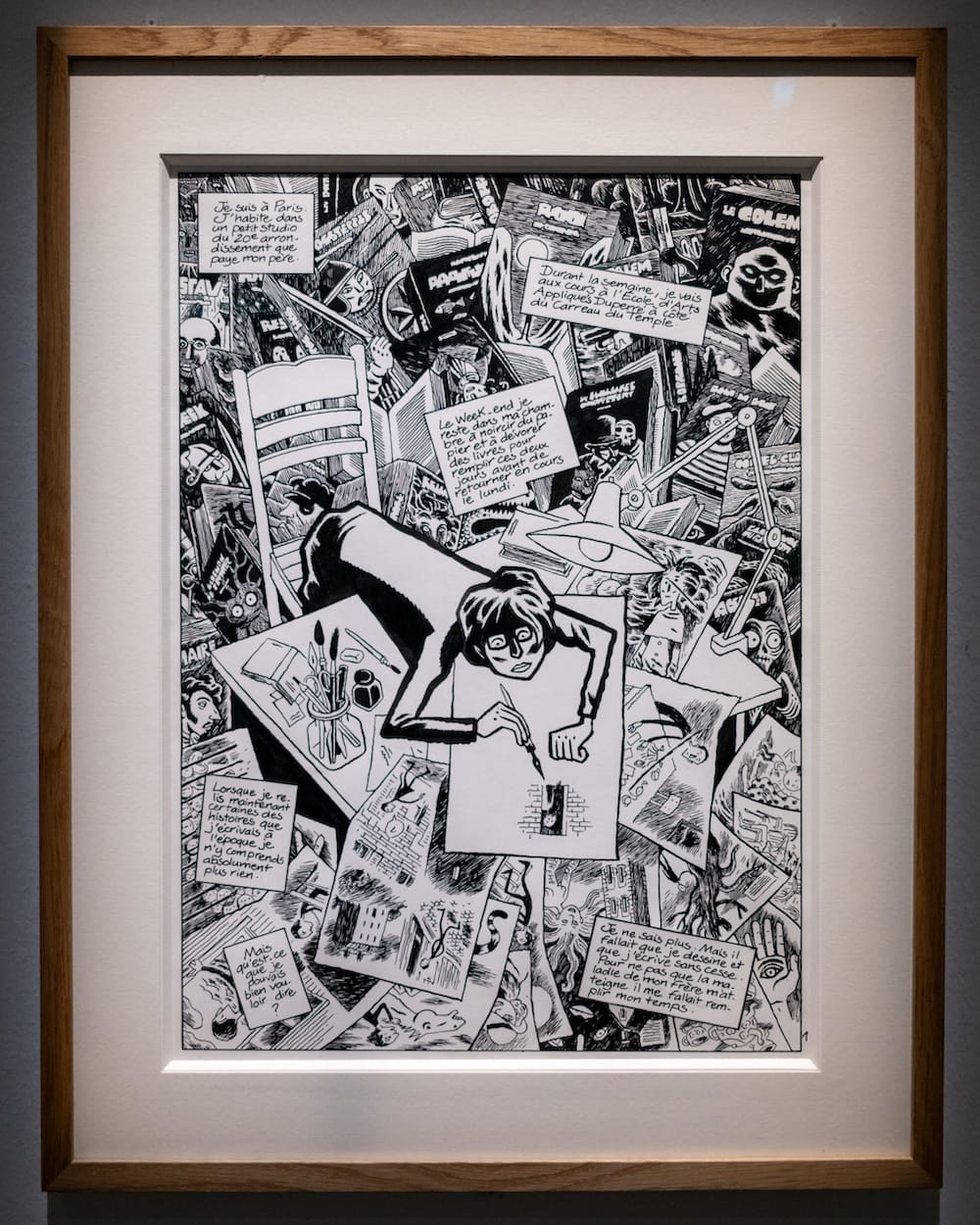
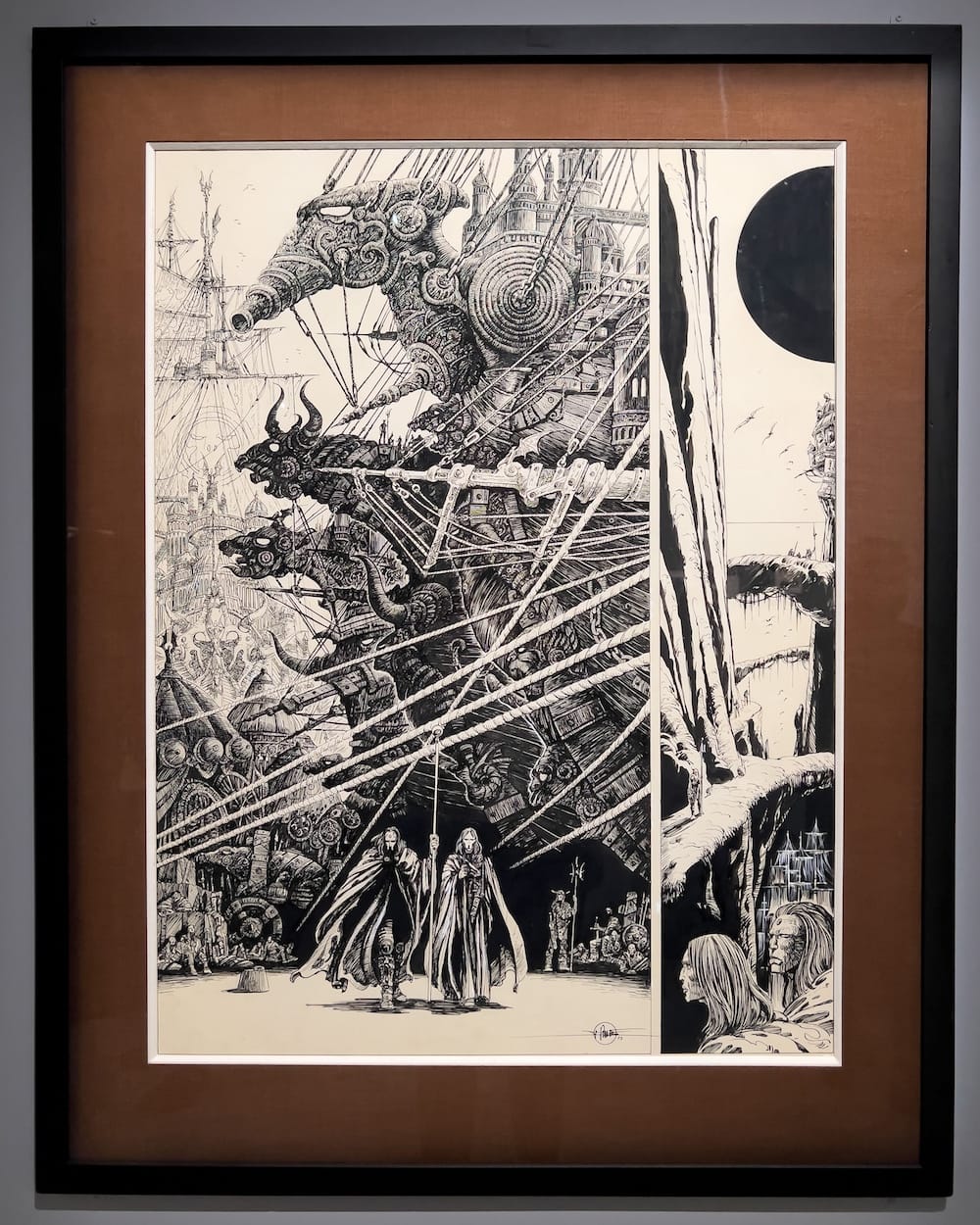
Art Spiegelman (left), David B. (middle), Philippe Druillet (right)
I wish I had scheduled more time to visit “Bande Dessinée 1964-2024”, the amazing comic art exhibition at the Centre Pompidou. With hindsight it was a bad idea to visit both the surrealism retrospective and the comic art exhibition on the same evening. As I wandered around the exhibition I was totally engrossed and I completely lost track of time. I was overwhelmed by the both the quantity and the quality of the works on show.
I am not a complete novice to the world of comic books and graphic novels, but I’m by no means an expert. I own a couple of graphic novels, - Building Stories and Jimmy Corrigan by Chris Ware, Here by Richard McGuire, La couleur des choses by Martin Panchaud and Things from the Flood and The Electric State by Simon Stålenhag -, but I only know a handful of artists by name: Hergé, Joost Swarte, Robert Crumb, Marjane Satrapi and Art Spiegelman are the ones that spring to mind. Of course I’ve read Calvin and Hobbes and Peanuts but I’m ashamed to admit that I’d forgotten the name of their author (Bill Watterson respectively Charles M. Schultz). So for me this exhibition served as an extensive introduction to what the French call the ninth art.
The organizers of the exhibition have chosen 1964 as a starting point, because that was the year the comic book came of age as an art form. It was the year that saw the release of Jean-Claude Forest’s Barbarella and the first publication of the Japanese avant-garde manga magazine Garo. Four years later, in 1968, Robert Crumb published the first issue of Zap Comix, which became the model for underground comic books in the U.S.. It came with a notice on the front cover “Fair Warning: For Adult Intellectuals Only”.
The exhibition consists of twelve thematic sections: Counterculture, Horror, Dreams, Humour, Colour and Black and White, History and Memory, Personal Stories, The Passage of Time, Literature, Science Fiction, Cities and Geometry. The exhibition opens with a section on counterculture, which includes original artworks by Art Spiegelman and Robert Crumb and several covers of Garo, some works by the French underground collective Bazooka and much more.
The next room that I visited was dedicated to humour, with original page spreads from Asterix and Lucky Luke and some Snoopy and Calvin and Hobbes cartoons. I enjoyed seeing the originals, because they are much larger than the published versions. The works have been mounted on the walls and hung from the ceiling, with wires extending from the ceiling to the floor. As is to be expected there is some astounding work on display in the sections on horror and dreams. These works are rich in imagination.
I probably spent about an hour in the first four rooms. I soon realized that at the pace at which I was proceeding I would never be able to see the entire exhibition. The thing with comics is that you have to look AND read. So eventually I decided to speed up a little bit and make a mental note of the exhibits I wanted to have a closer look at, should I have some time left once I reached the end of the exhibition.
There was just so much to see and discover, so many artists that I had never heard of. I loved the section on Science Fiction, which included some original Marvel covers and some amazing work by Philippe Druillet. Another one of my favourite sections was the one dedicated to Cities. The work of Nicolas de Crécy, Will Eisner, Marc-Antoine Mathieu and François Schouten and Benoit Peeters is simply astounding. I was surprised to learn that Benoit Peeters is the same Benoit Peeters as the author of a Jacques Derrida biography. He has also written an essay for the catalogue.
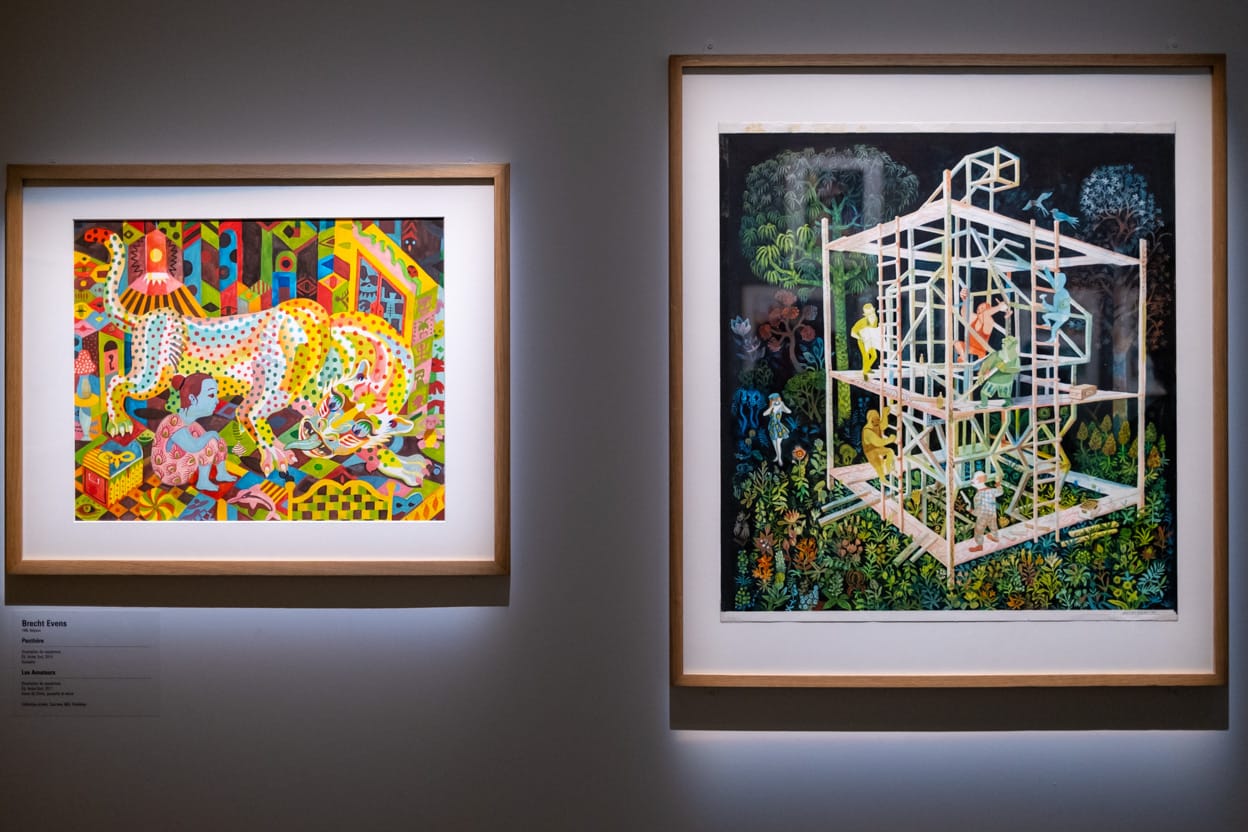
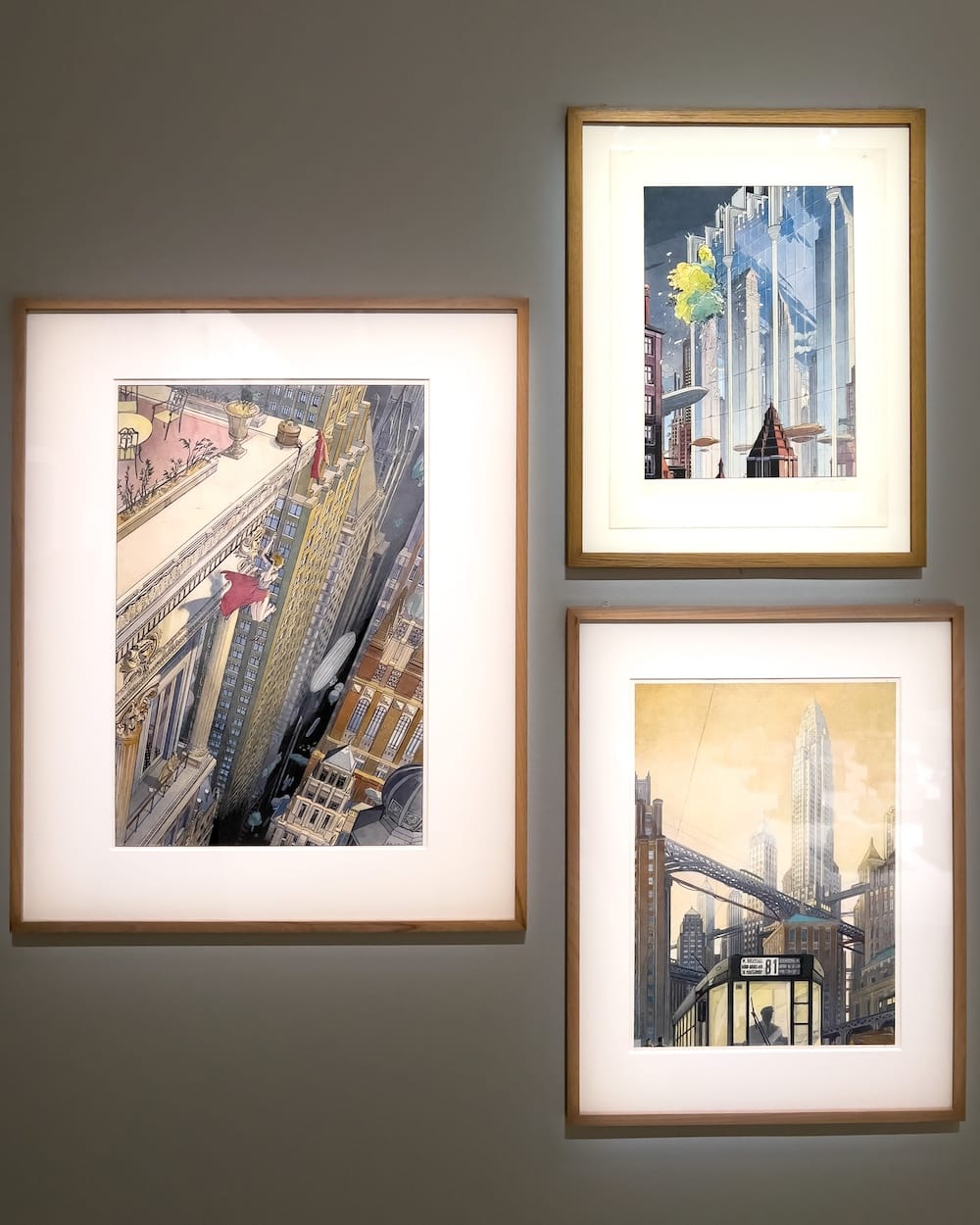
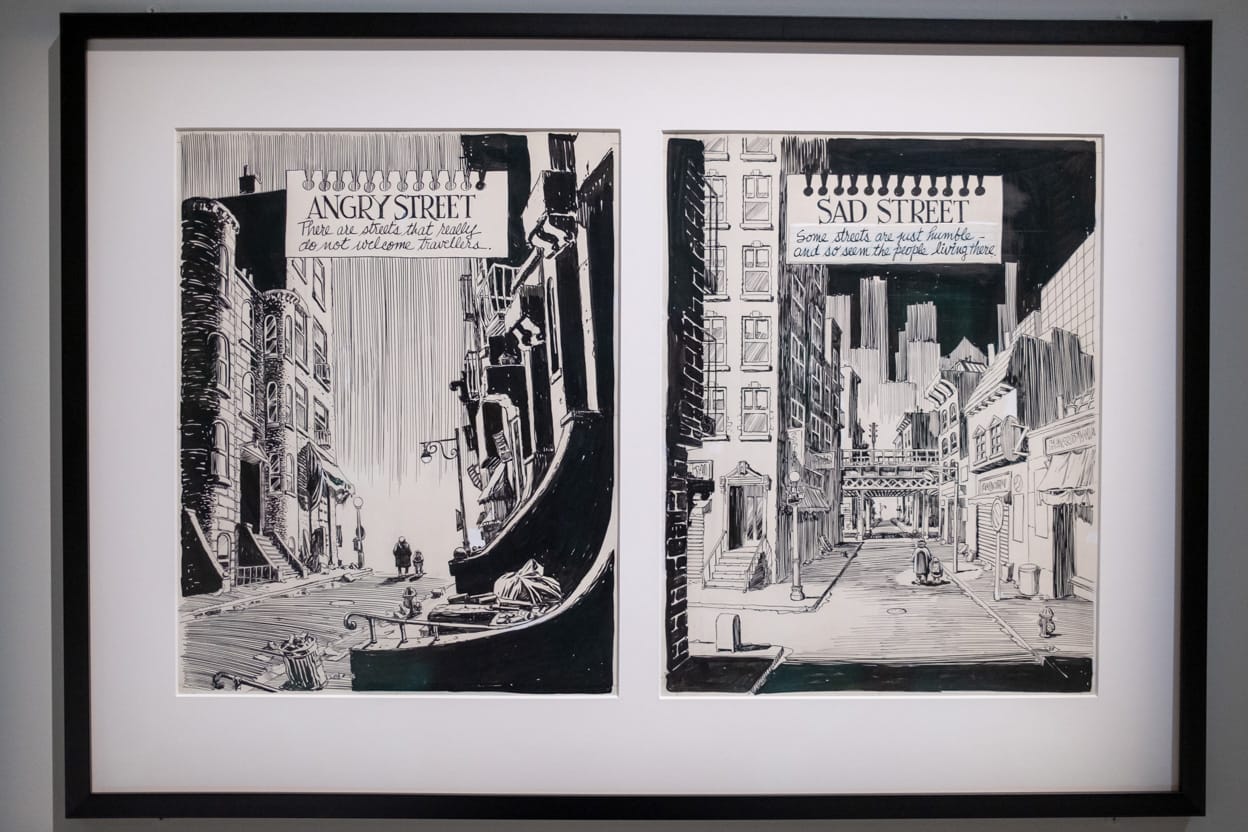
Brecht Evens (left), François Schouten and Benoit Peeters (middle), Will Eisner (right)
Many of the works on show are far more interesting than much contemporary art. The page spreads by Brecht Evens are an absolute marvel. So is the work of Moebius, Philippe Druillet and Yoshihiro Tatsumi. Every single one of these frames is an artwork in itself. Of an entirely different order are the wordless page spreads by Keizo Miyanishi and the black and white drawings of Edmond Baudoin.
Now that I’m back home I realize that I didn’t take nearly enough pictures, because the catalogue only contains a small fraction of the material on show. Why didn’t I take a picture of the amazing cover by Frank Miller of a Titan Books edition of The Dark Knight Returns? Why didn’t I take some pictures of the wonderful work of Hideshi Hino, Susumu Katsumata and Kuniko Tsurita?
"Bande Dessinée 1964-2024" is a phenomenal exhibition. It says a lot about the quality of the works on show that the work of Chris Ware and Art Spiegelman doesn’t stand out. The organizers have put a lot of research into the exhibition and have brought together a wealth of material. It made me yearn for more and I’m now eager to seek out full-length albums by Brecht Evens and the Obscure Cities series by François Schuiten and Benoît Peeters. I will also be on the lookout for anthologies of some of the Japanese manga artists included in the exhibition.
The exhibition is accompanied by a richly illustrated catalogue available in both French and English. The English version is published by Thames & Hudson.
Bande Dessinée 1964-2024 was at the Centre Pompidou until 4 November 2024.
Links
My review of "Then and There, Here and Now", the Richard McGuire retrospective at the Cartoon Museum in Basel.